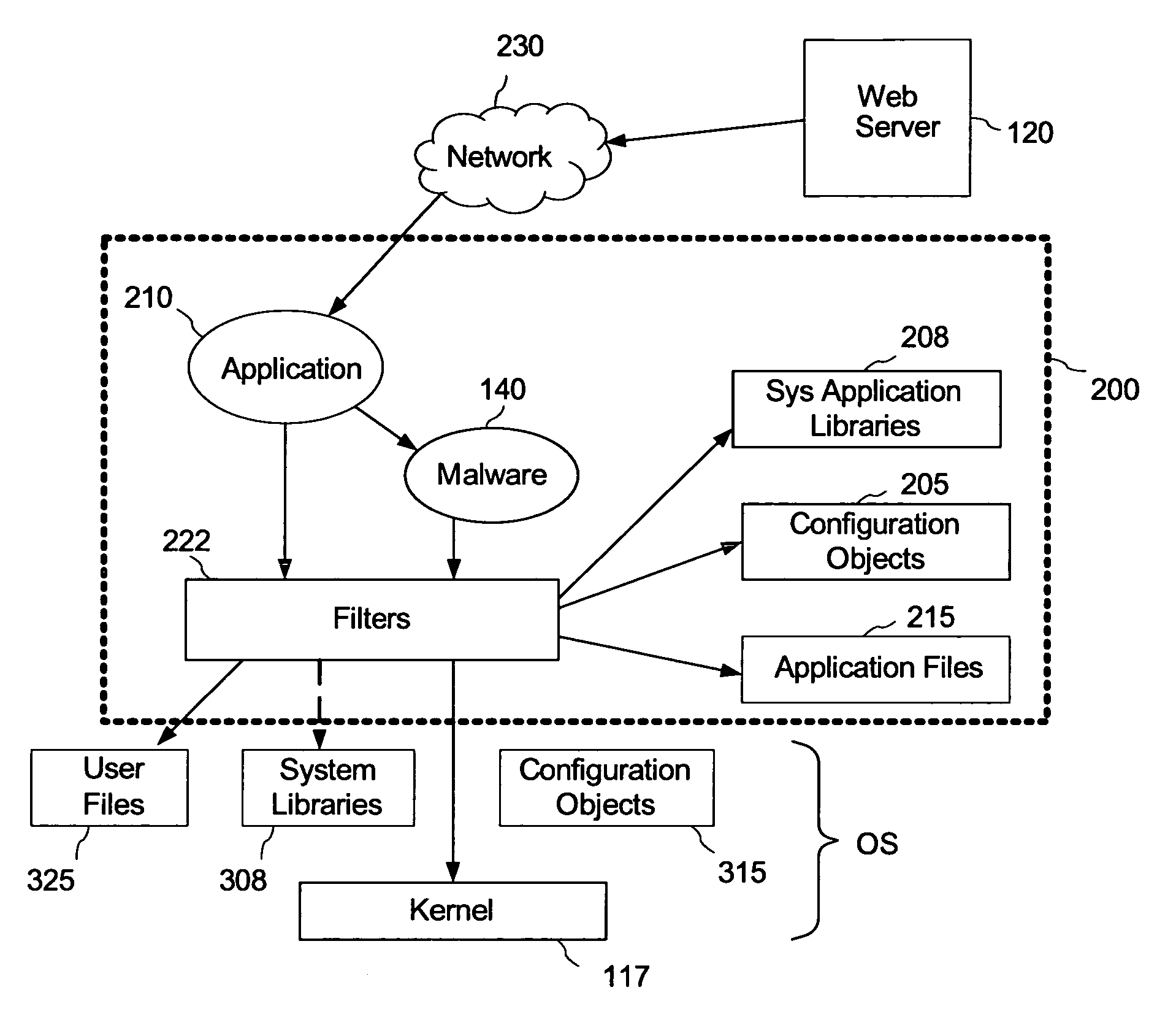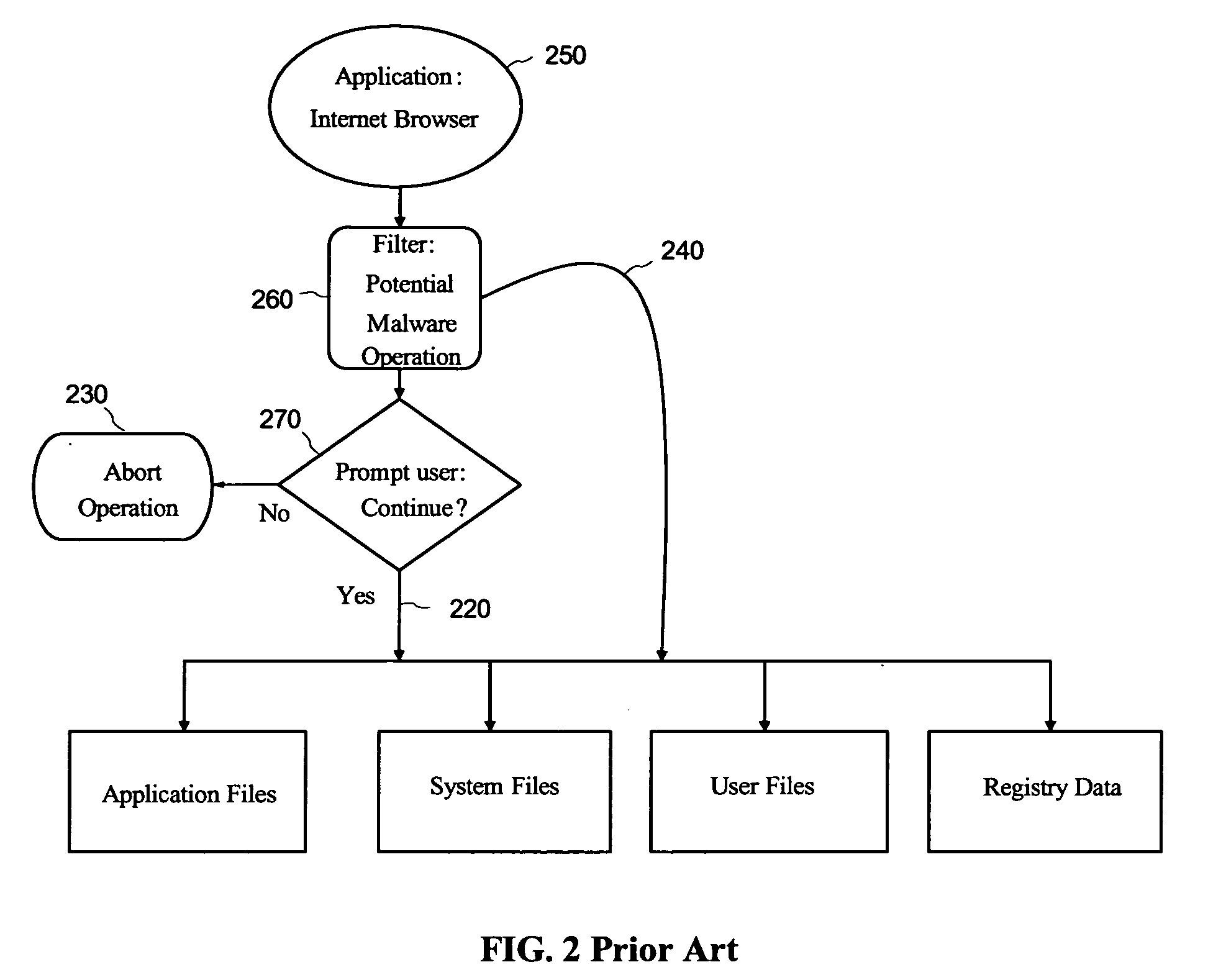Malware containment by application encapsulation
a technology of application encapsulation and malware, applied in the field of computer software, can solve the problems of malware code affecting malware a major issue in the computer world, and malware code may corrupt specific files and settings, so as to prevent malwar
- Summary
- Abstract
- Description
- Claims
- Application Information
AI Technical Summary
Benefits of technology
Problems solved by technology
Method used
Image
Examples
Embodiment Construction
[0040] The following definitions are used in this specification:
[0041] Computer platform: A computer system with a single instance of a fully functional operating system installed is referred to as a computer platform. A computer platform, also referred to hereinafter as a computer, includes a processor, an operating system (OS) including a kernel residing on the computer platform, and a set of associated system objects compatible with the kernel and the processor.
[0042] Application is a set of objects associated together for performing a function or a service; an application includes an object executable by an operating system for performing a task related to the service provided by the application. The term “application” is also used herein to mean a process or processes executing instructions from the application objects.
[0043] User mode: The context in which applications execute.
[0044] Kernel mode: The context in which the kernel portion of an operating system executes. In c...
PUM
 Login to View More
Login to View More Abstract
Description
Claims
Application Information
 Login to View More
Login to View More - R&D
- Intellectual Property
- Life Sciences
- Materials
- Tech Scout
- Unparalleled Data Quality
- Higher Quality Content
- 60% Fewer Hallucinations
Browse by: Latest US Patents, China's latest patents, Technical Efficacy Thesaurus, Application Domain, Technology Topic, Popular Technical Reports.
© 2025 PatSnap. All rights reserved.Legal|Privacy policy|Modern Slavery Act Transparency Statement|Sitemap|About US| Contact US: help@patsnap.com



